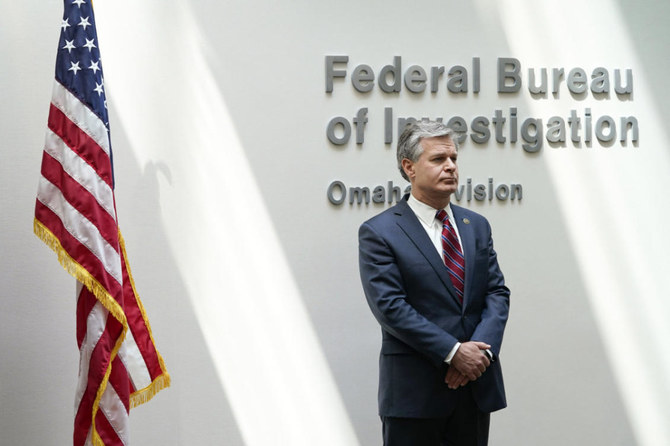OMAHA, Nebraska: US federal agents were looking for documents relating to nuclear weapons when they raided former President Donald Trump’s home in Florida this week, the Washington Post reported.
It was not clear if such documents were recovered at the former president’s Mar-a-Lago resort in Palm Beach, the Post said.
The US Justice Department asked a judge on Thursday to make public the warrant that authorized the FBI search of Mar-a-Lago, after Trump, a Republican, portrayed it as political retribution.
The request means the public could soon learn more about what investigators were looking for during the unprecedented search of a former president’s home.
The search was part of an investigation into whether Trump illegally removed records from the White House as he left office in January 2021, some of which the Justice Department believes are classified.
Earlier, the director of the FBI had strong words for supporters of former President Donald Trump who have been using violent rhetoric in the wake of his agency’s search of Trump’s Mar-a-Lago home.
Christopher Wray, who was appointed as the agency’s director in 2017 by Trump, called threats circulating online against federal agents and the Justice Department “deplorable and dangerous.”
“I’m always concerned about threats to law enforcement,” Wray said. “Violence against law enforcement is not the answer, no matter who you’re upset with.”
Wray made the remarks following a news conference during a long-planned visit to the agency’s field office in Omaha, Nebraska, where he discussed the FBI’s focus on cybersecurity. He declined to answer questions about the hours-long search Monday by FBI agents of Trump’s Palm Beach, Florida resort.
It has been easy to find the threats and a call to arms in those corners of the Internet favored by right-wing extremists since Trump himself announced the search of his Florida home. Reactions included the ubiquitous “Lock and load” and calls for federal agents and even US Attorney General Merrick Garland to be assassinated.
On Gab — a social media site popular with white supremacists and antisemites — one poster going by the name of Stephen said he was awaiting “the call” to mount an armed revolution.
“All it takes is one call. And millions will arm up and take back this country. It will be over in less than 2 weeks,” the post said.
Another Gab poster implored others: “Lets get this started! This unelected, illegitimate regime crossed the line with their GESTAPO raid! It is long past time the lib socialist filth were cleansed from American society!“



























